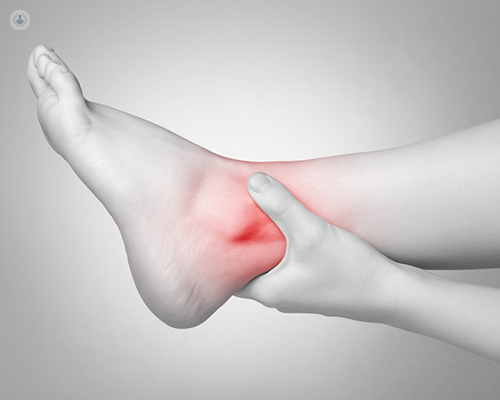How long does a child’s sprained ankle take to heal?
Written by:In this article, Mr Darius Rad, a highly distinguished paediatric orthopaedic surgeon, tells us whether or not one’s child’s sprained ankle always necessarily requires medical treatment, and explains how a sprained ankle is generally treated in children.

How do I know if my child’s ankle is broken or sprained?
Typically, there will be immediate pain and an inability for your child to put weight on the leg. As a general rule, if you notice a large deformity, an inability to put their foot on the ground, and/or an inability to move the ankle joint or foot, there is a risk the foot or ankle joints might have suffered a fracture or break.
Does a sprained ankle need medical attention?
A very mild sprain will not need anything but some rest, elevation, and ice. If the ankle pain doesn’t settle down with rest over a day or two, and especially if your child can’t put their foot down, please seek medical attention.
How is an ankle sprain treated?
Most of these cases will settle down without any intervention from a medical professional. A trial of rest/elevation and ice packs over the affected joint will be sufficient to aid in the initial phase. Adding regular analgesia such as ibuprofen and paracetamol will be a great adjunct to the initial treatment. If this doesn’t help, after one or two weeks, please seek medical advice as the injury might be more complicated and may need further imaging and treatment.
Can a child walk on a sprained ankle?
In the initial stages after the injury, walking is usually quite difficult. However, after a couple of days, the pain should settle down and allow walking. If this is not the case, coming to see a paediatric orthopaedic surgeon is indicated. Even if we are not dealing with a fracture, a walking boot is sometimes indicated to allow the soft tissues around the joint to not sustain further stress while walking.
How long does a child’s sprained ankle take to heal?
A simple ankle sprain will take up to two weeks to heal and allow full range of movement once again.
How can a sprained ankle in a child be prevented?
Children and adolescents are encouraged to engage in all possible activities and sports, in school or outside. Some also participate in high level athletic events. It is essential that every time these take place, that the child is engaging with the warm-up programme, and is practicing dynamic stretching exercises (lounges, toe touches, jumping jack stretches). With these built into their routine, injury risk will significantly decrease.
If you feel as though your child has sprained their ankle recently, you can ease your mind by scheduling an appointment with Mr Darius Rad via his Top Doctors profile.


